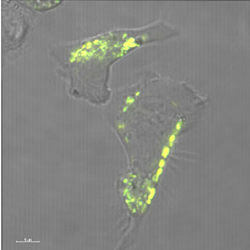
Cytotoxic T lymphocytes (CTLs) recognise and destroy cells which are infected with viruses or are cancerous. This latter property puts them at the heart of new immunotherapies transforming cancer treatment. One feature that makes CTLs so efficient is that they are able to kill one target after another – but they also need to replenish their toxic payloads to keep on killing without impairing other pathways that keep them alive. New research from the Griffiths lab has shed light on how CTLs are able to control this process. Publishing in Science, CIMR PhD student Miriam Lisci and colleagues show that this careful balancing act is regulated by mitochondria that set the pace of killing according to their own rates of protein synthesis. This enables the killer cells to maintain homeostasis and keep on killing under challenging conditions when a prolonged response is required.

